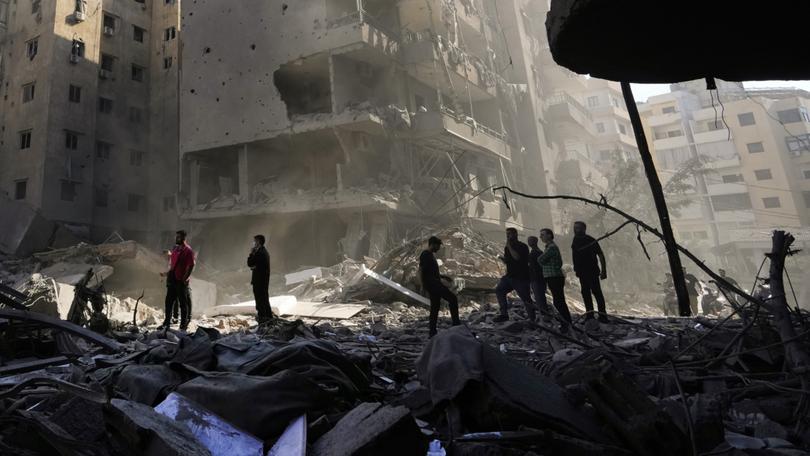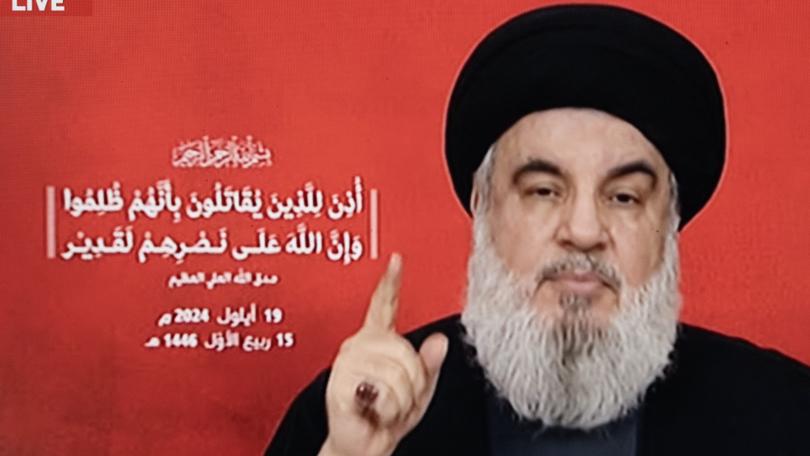What is Hezbollah, and what does it and Lebanon have to do with the Israel-Hamas war in Palestine?

Months of escalation in the simmering cross-border conflict between Israel and Lebanon has boiled over.
Israel has begun “targeted” ground operations in southern Lebanon on Tuesday morning (AEST) in its bid to push Hezbollah forces away from the countries’ connecting border.
Israeli Prime Minister Benjamin Netanyahu has said Israel’s goal was to “defeat Hezbollah” and return 70,000 displaced Israelis to their homes in the country’s north.
Sign up to The Nightly's newsletters.
Get the first look at the digital newspaper, curated daily stories and breaking headlines delivered to your inbox.
By continuing you agree to our Terms and Privacy Policy.Israeli Defence Minister Yoav Gallant told troops on the northern border: “We will use all the means that may be required — your forces, other forces, from the air, from the sea, and on land.”
To anyone who has not been paying attention, this new Israel-Lebanon war may seem to have come out of nowhere. But there is a much longer and bloody history of animosity between Israel and Hezbollah that is critical to understand.
What is Hezbollah?
Hezbollah (Arabic for ‘Party of God’) is a Shiite Muslim political party and militant group based in Lebanon, backed by Iran and Syria, and driven by its total, violent opposition to Israel and Western influence in the Middle East.
It was formed in 1982 — modern Lebanon was only born in 1920 — from consolidated Shia militias primarily to fight Israeli invasions that had created a humanitarian crisis in the south. It shares the Shi’i radical ideology modelled by the leader of the Islamic Revolution in Iran, Ayatollah Ruhollah Khomeini.
In 1985, in the thick of Lebanon’s Civil War, Hezbollah laid out its first manifesto which proclaimed Hezbollah’s allegiance to Iran’s supreme leader and its commitment to establishing an Iran-influenced Islamist government and to emphasising Lebanese self-determination.
At the end of the Lebanese Civil War in 1990, despite the Taif Agreement asking for all militias (Lebanese or not) to be disbanded, Syria, which controlled Lebanon at the time, allowed Hezbollah to remain and control Shia areas along the border with Israel.
Although not a recognised military force, Hezbollah’s leader Hassan Nasrallah said in 2023 the group had some 100,000 at its disposal. According to the Center for Strategic and International Studies, the militia has an estimated 120,000 to 200,000 rockets and missiles.
By some estimates, Hezbollah is bigger and better equipped than Lebanon’s actual military.

Nasrallah led Hezbollah as its secretary-general since it evolved from a revolutionary group to a political entity in 1992, when it claimed to take a more lenient stance to cultural, political, and religious differences — except for individuals and groups tied to Israel.
Despite this, for almost two decades, Hezbollah has been designated a terrorist organisation by the US government and its allies, and Nasrallah and senior affiliates deemed global terrorists.
Hezbollah has taken major blows in recent weeks, after airstrikes on the ground and coordinated targeted attacks against its members, allegedly but not claimed by Israel. Nasrallah was assassinated in one such airstrike in Beirut in September 2024.
What does Hezbollah have to do with the Israel-Hamas war?
Cross-border tensions between Hezbollah and Israel have escalated amid Israel’s ongoing war with Hamas in the Gaza Strip, long before the unprecedented October 7 attacks that triggered the last year of conflict.
The day after Hamas launched its unprecedented attack on Israel, Hezbollah fired at Israeli positions in solidarity with the Palestinians.
Hezbollah has since launched more than 8000 rockets at northern Israel and the Israeli-occupied Golan Heights, as well as launching explosive drones and anti-tank missiles to take out armoured vehicles. The Israeli Defence Force (IDF) has launched its own lethal assaults on Lebanon in retaliation, even as it decimates Palestine.
The risk of all-out war escalated on July 27 when a rocket strike in Golan Heights killed 23 children and young people. Israel blamed Hezbollah, but the group denied it. In response, the IDF launched its own air strikes.
On July 30 it announced it had killed senior Hezbollah military commander Fuad Shukr in an air strike in Beirut’s southern suburbs. The following day, Hamas political leader Ismail Haniyeh was killed in Tehran — Israel did not confirm nor deny its involvement in his death.
Another significant escalation came on September 17 and 18, when dozens of people were killed and thousands wounded after pagers and walkie-talkies used by members of Hezbollah exploded across Lebanon and Syria. Israel was accused of carrying out the attacks but has not commented on them.
Days later, on September 20, 16 more Hezbollah leaders — as well as children and civilians — were killed in an air strike in southern Beirut. Hezbollah returned fire by launching longer-range missiles into Israel. The IDF launched its own airstrikes and, now, a ground invasion.
How bad could this conflict get?
In a word: Very.
Israel and Hezbollah’s alliances could pull in major regional and global players and make the conflict spill further.
The US, Israel’s ally, said it was deploying an unspecified number of additional troops to the area after these latest operations — it already has about 40,000 military personnel in the area, according to Al Jazeera.
Meanwhile, Hezbollah’s allies in the Axis of Resistance, even Iran — which has the largest and most powerful military in the region — could retaliate by launching their own strikes against Israel.
But so far, despite Israel’s provocations — including an April 2024 airstrike on Iran’s consulate in Damascus, Syria, and the killing of Hamas political leader Ismail Haniyeh in Tehran in July — Iran has barely blinked.
The threat of nuclear warfare also looms over the conflict. Israel, though it has never admitted to having nuclear weapons, is estimated to have an arsenal of 90 such warheads, Al Jazeera reports.
Iran, meanwhile, is considered to be close to being armed with nuclear weapons after an agreement to limit the country’s nuclear program was dissolved by former US President Donald Trump in 2018.
